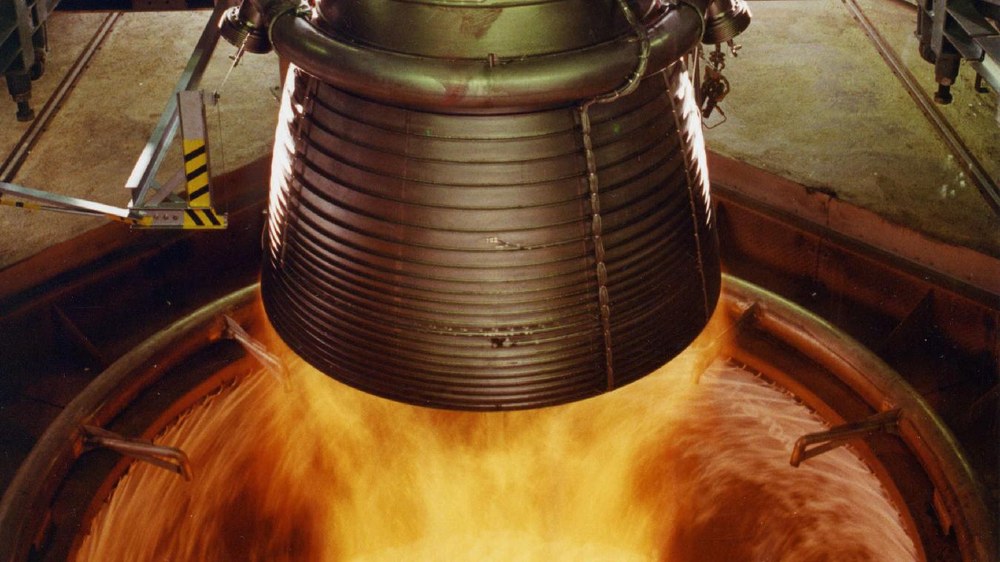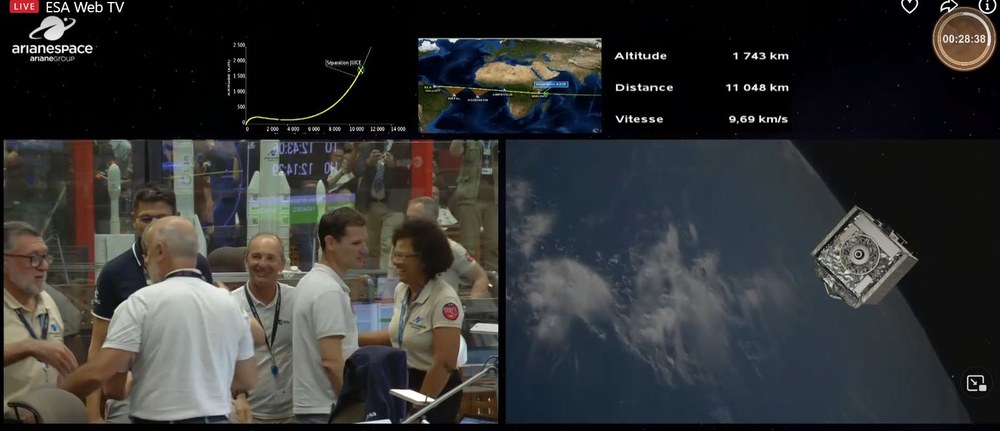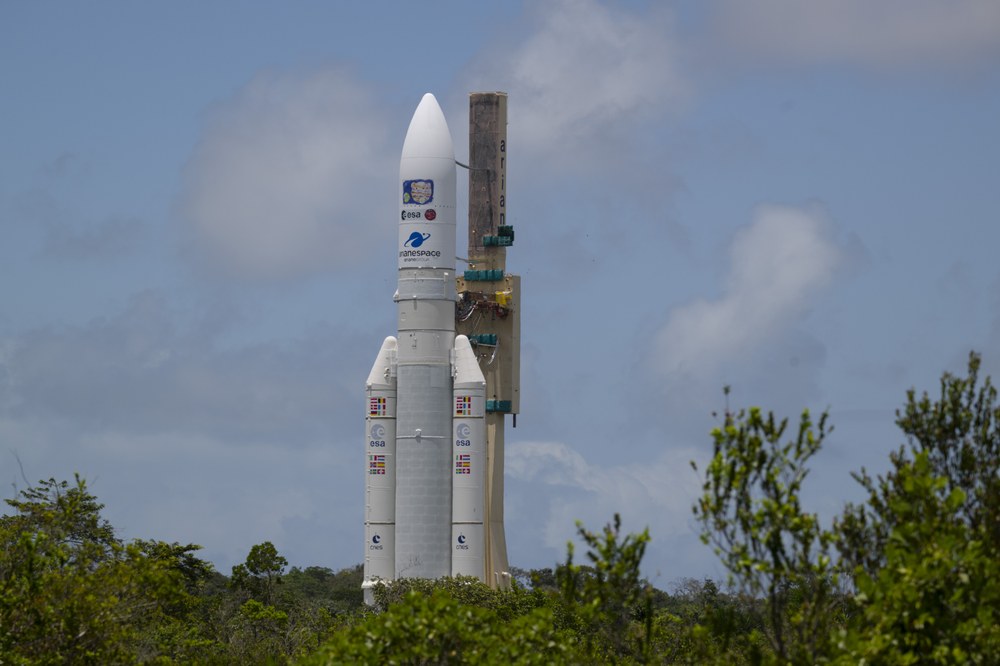Launch with Ariane 5 ECA launcher

The JUICE space mission was launched on 14 April 2023 on board an Ariane 5 ECA launcher. The Ariane 5 is a heavy-lift rocket for European spaceflight. It was developed on behalf of the European Space Agency (ESA) and has been in use since 1996. The Ariane 5 ECA can carry payloads of almost 16 tonnes into Earth orbit or nearly 11 tonnes out of Earth orbit to destinations in the Solar System.
With its payload container at the tip, the 'fairing', the launcher is 53 metres tall and has a diameter of 5.4 metres. One or two satellites can be transported into geostationary orbit in the rocket's nose cone, or three if the satellites are small. Two boosters are attached to the side of the rocket body to increase launch performance. The launch mass of the Ariane 5 ECA is 777 tonnes.
In the Vulcain engine of the first stage and the HM-7B engine of the second stage, cryogenic hydrogen and oxygen, cooled down to very low temperatures, are burnt in a process called 'oxyhydrogen reaction'. The suffix 'ECA' expresses the further development of the engine compared to previous versions: 'Evolution Cryotechnique Type A'. The first stage consumes 173 tonnes of fuel during its nine-minute burn time, the second stage another 14.6 tonnes for another burn time of almost 16 minutes. The first-stage Vulcain-2 engine develops a thrust of 1,390 kilonewtons in vacuum, the HM-7B engine 67 kilonewtons in vacuum.
A solid propellant consisting of polybutadiene, aluminium powder and ammonium perchlorate is used in the two boosters, which are about 30 metres tall and have a diameter of three metres each. The thrust profile of the two boosters changes as the burning time increases, rising from an initial 4400 kilonewtons to 6650 kilonewtons. The boosters burn out after 130 seconds, separate and fall into the Atlantic Ocean, where they are recovered and recycled.

The various components of the Ariane 5 launchers are built in Europe by different manufacturers, taken to the European Spaceport in French Guiana Guyanais (Centre Spatial Guyanais; CSG), where they are integrated. The European Spaceport in Kourou is operated by the French space agency CNES. Ariane and Vega rockets have been launched from here since 1979, and Soyuz launch vehicles have sometimes also taken off from there. Kourou is located just 580 kilometres from the equator so almost the maximum amount of the Earth's rotation of 1666 kilometres per hour can be used there as 'launch bonus' when taking off in an easterly direction.
105 launches have taken place with Ariane 5 since 1979, and the transport of the JUICE mission will probably be this launcher's penultimate launch. The Ariane 6 launch vehicle is currently being developed as its successor. The launch of the JUICE mission will be the 23rd launch of an Ariane 5 ECA. In all versions flown, Ariane 5 has an overall reliability of 98.5 percent. The multinational company Arianespace, based in Évry near Paris, is responsible for building and operating the Ariane launchers.
ESA mission with strong German participation
JUICEi s ESA's largest and most comprehensive mission to explore the planets of the Solar System. In addition to ESA , NASA and the Japanese space agency JAXA have also contributed to the mission. ESA is providing funding for the satellite platform, the launch with an Ariane 5 ECA rocket and the operation of the spacecraft. The funding for the scientific payloads for JUICE is largely provided by national space agencies and the participating institutes themselves. In addition to the JANUS, SWI and GALA experiments, the German Space Agency at DLR is funding further German scientific contributions from the National Space Programme with the Particle Environment Package (PEP) particle spectrometer, the Jupiter Magnetometer (J-MAG), the Radar for Icy Moons Exploration (RIME) radar instrument and an instrument for radiosounding Jupiter's atmosphere (3GM).


